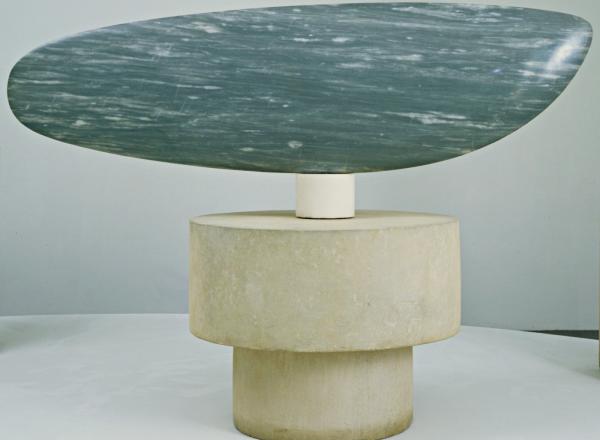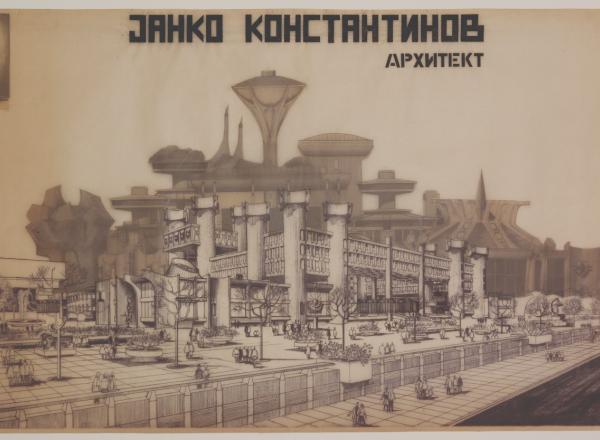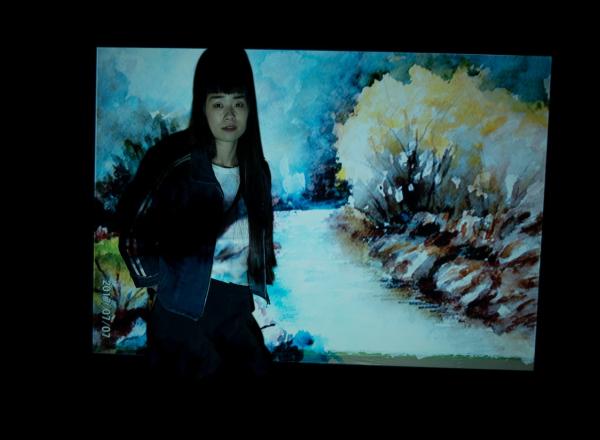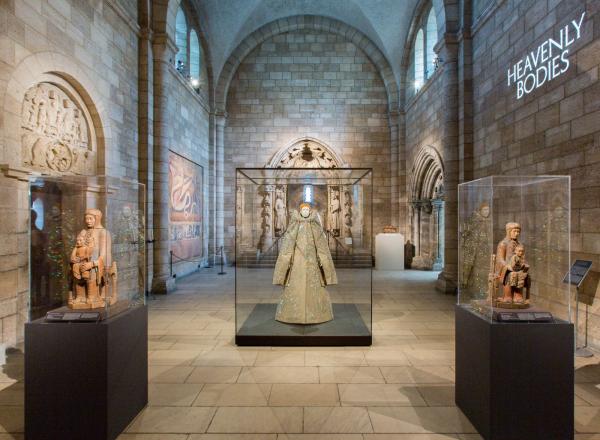In a new exhibition, the Museum of Modern Art (MoMA) showcases their collected works of Constantin Brancusi, one of the most influential sculptors of the 20th Century. The exhibition includes eleven sculptures, shown together for the first time, as well as drawings, photographs, and films, some of which Brancusi made in his studio with his friend Man Ray. Rare archival material illuminates the artist’s process and many of Brancusi’s relationships with friends, patrons, models, and museums.
Art News
In this video, artist Huma Bhabha and curator Shanay Jhaveri discuss her sculpture We Come in Peace, the 2018 site-specific installation for The Met's Iris and B. Gerald Cantor Roof Garden, the sixth in a series of commissions for the outdoor space. Bhabha's work addresses themes of colonialism, war, displacement, and memories of place. Using found materials and the detritus of everyday life, she creates haunting human figures that hover between abstraction and figuration, monumentality and entropy.
This week the Museum of Modern Art debuted the first major US exhibition devoted to the architecture of Yugoslavia. Toward a Concrete Utopia: Architecture in Yugoslavia, 1948–1980, uses over 400 objects related to architecture and design to examine this critical period in the nation's history.
Photographer Rinko Kawauchi discusses her interest in the small mysteries of everyday life, which she explores in her series Utatane (2001). She explains why she was drawn to the sublime beauty of the controlled burning of grasslands in Japan for her series Ametsuchi (2012–13), and reflects on how her photography comes from a state between dreams and waking.
An array of optical illusions, trompe l’oeil, and hyperrealism are on display in Chicago Works: Mika Horibuchi, now at the MCA Chicago. Horibuchi’s work plays with the nature of reality, upending viewers expectations. One of her pieces references an ambiguous 19th Century duck/rabbit illustration; her deceptively simple painting could be either a bunny or a duckling in repose, depending on the viewer's perception.
Follow V&A Conservators as they treat an elaborately decorated Japanese palanquin in our collection. Known as a ‘norimono’ in Japanese, meaning ‘thing to ride’, this box-like enclosed chair would have carried a bride of high social-rank to the groom’s home after their wedding. Conservation work included stabilising areas of lifting laquer on the surface decoration, which had been beautifully created using the ‘maki-e’ technique, meaning ‘sprinkled picture’.
Alejo Benedetti and Steven Zucker discuss Andy Warhol's Coca-Cola [3] (1962, casein on canvas, © The Andy Warhol Foundation for the Visual Arts) at Crystal Bridges Museum of American Art.
In this episode of Anatomy of an Artwork, immerse yourself in the history and details of Rembrandt’s monumental painting 'The Night Watch’. Perhaps the most celebrated painting of the Dutch Golden Age, 'The Night Watch’ is also a triumph of painting on a grand scale and a masterful example of tenebrism, the dramatic use of light and shadow. Over the four centuries since its creation, the work has been reduced in size, slashed by a school teacher and even sprayed with acid and yet it still endures as a testament to the majestic genius of Rembrandt.
Joshua Reynolds and Thomas Gainsborough were Georgian art superstars and friendly rivals. The Royal Academy's annual Summer Exhibition was the perfect setting for them to go head to head, as curator Mark Hallett, Director of Studies at Paul Mellon Centre, explains. See their paintings, and many other spectacular works from 250 years of the Summer Exhibition, until 19 August 2018.
The Metropolitan Museum of Art’s exhibition, Heavenly Bodies: Fashion and the Catholic Imagination, sprawls across the Fifth Avenue location’s Medieval, Byzantine, and Lehman galleries and its Anna Wintour Costume Center, as well as the Met Cloisters further uptown.


![DEl Kathryn Barton [Australian b. 1972] the more than human love , 2025 Acrylic on French linen 78 3/4 x 137 3/4 inches 200 x 350 cm Framed dimensions: 79 7/8 x 139 inches 203 x 353 cm](/sites/default/files/styles/category_card_187x139/public/ab15211bartonthe-more-human-lovelg.jpg?itok=LJbNuU6F)
















![Ginevra de’ Benci [obverse]. 1474/1478. Leonardo da Vinci. Oil on Panel. Ailsa Mellon Brue Fund, National Gallery of Art.](/sites/default/files/styles/image_5_column/public/ginevradebenciobverse196761a.jpg?itok=hIzdUTaK)







